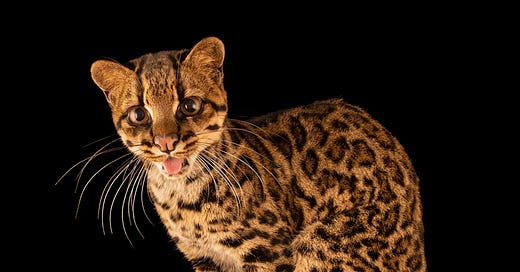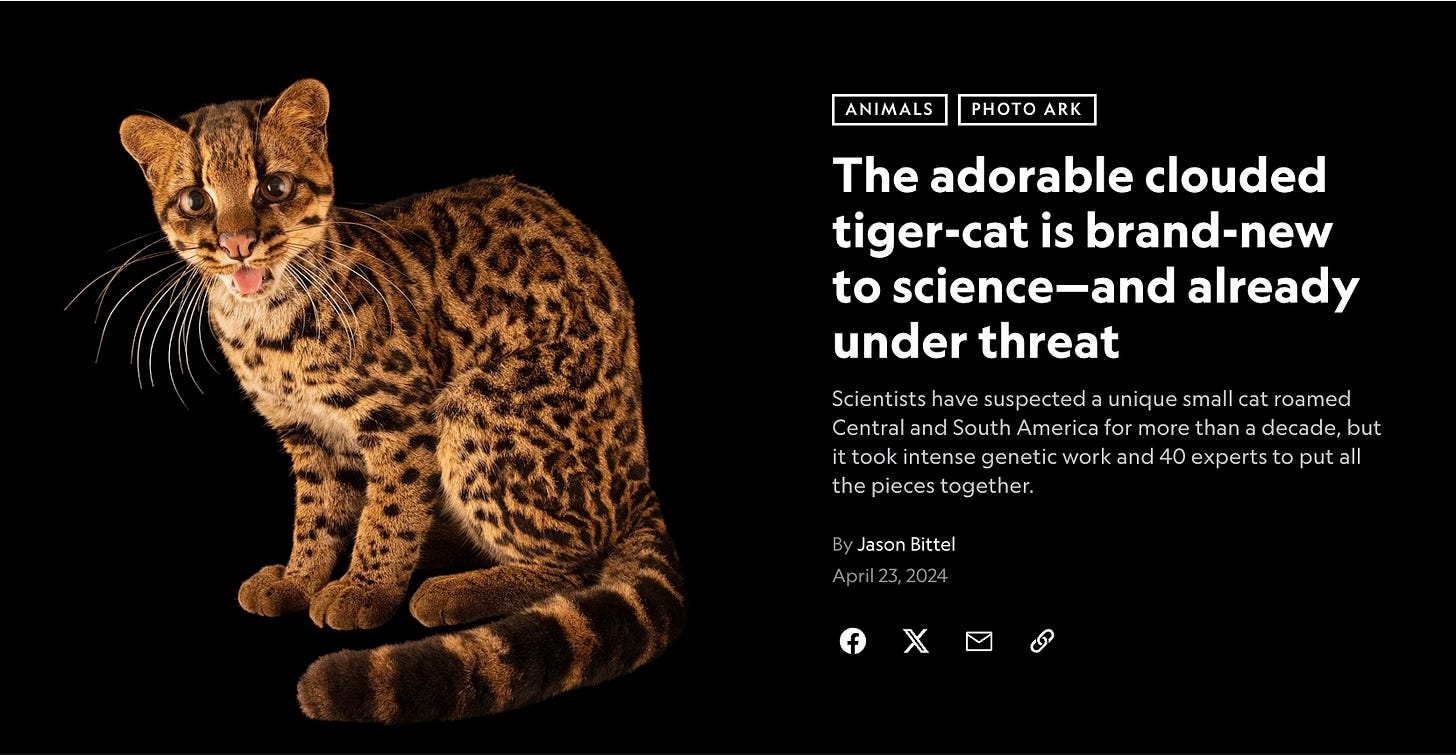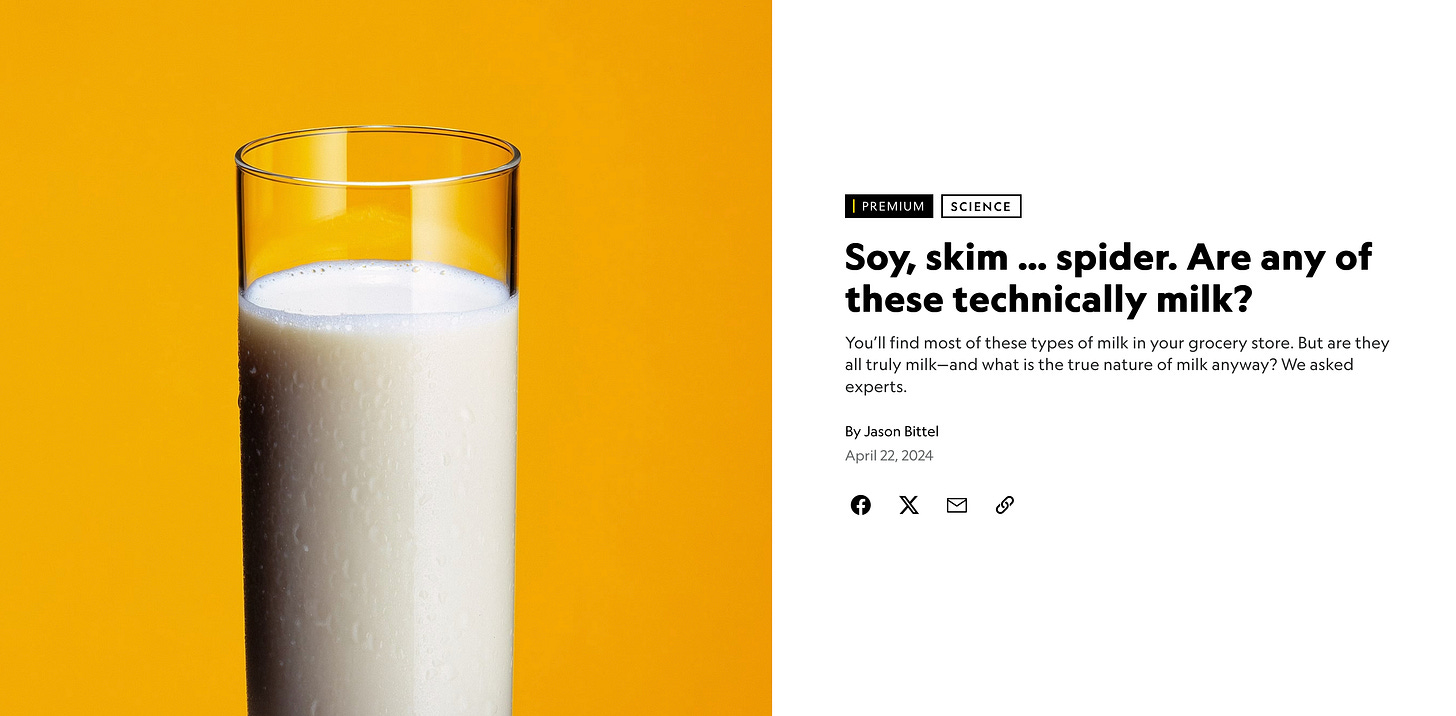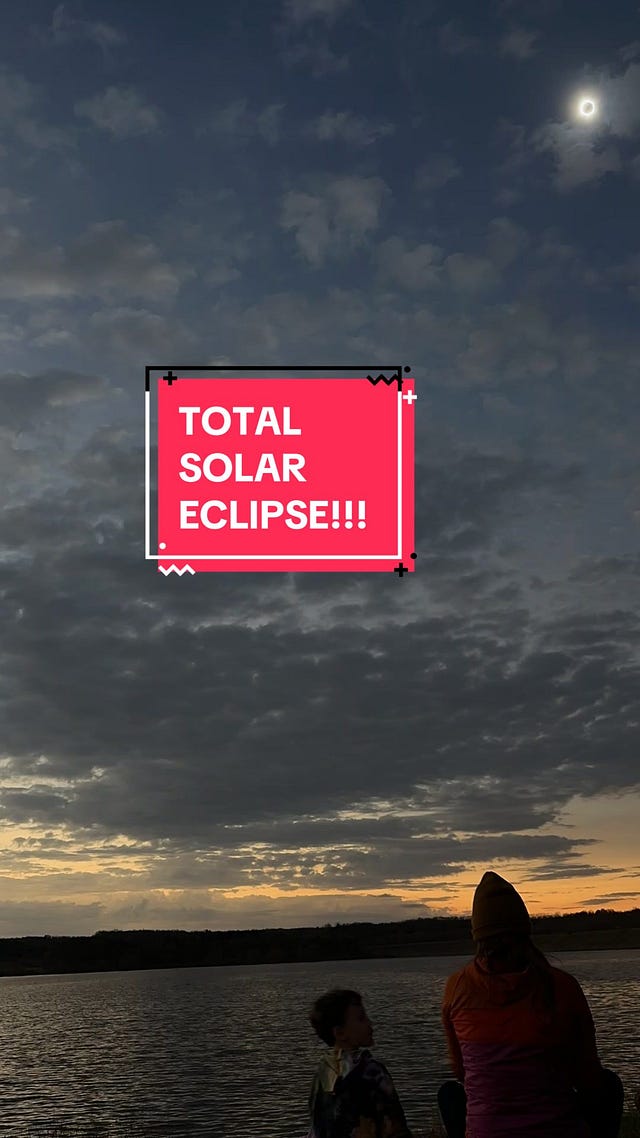Meet the New Species of Tiger-Cat
Plus: An Ode to the Bogs, An Investigation of Milk, Solar Eclipses & Bats, Living Fossils, & Bird Flu -- Oh my!
With spring in full swing here in western Pennsylvania, it’s tough not to be humming with excitement about the natural world. It feels like life is returning—though, to be fair, it’s been here all along.
And in some cases it was hiding, real sneaky-like, up to four feet underground.
These aren’t just idle musings, by the way. I just had a story go live over at The Washington Post about this year’s absolutely momentous emergence of cicadas. What’s so special, you may be wondering? Well, the last time these particular broods of 13-year cicadas and 17-year cicadas emerged at the same time, the year was 1803.
For reference, that means Thomas Jefferson was president and the ink on the Louisiana Purchase was still drying.
Anyway, scientists are extra super pumped about this because it’s going to allow them to do allllll kinds of science they haven’t been able to do before. Interested? Click on through:
The cicadas are coming, and some may become ‘flying saltshakers of death’
Meet the Clouded Tiger-Cat!
Do you like new species of adorable and floofy and under-known mammals? Well, then you’re going to love the newest species of felid that just dropped.
Known as the Clouded Tiger-Cat, or Leopardus pardinoides, this house-cat-sized kitty was once thought to belong to one of the other two tiger-cat species already known to science. But after a closer look—and I mean like 1,400 camera-trap photos, museum and zoo specimens, genetics, the works—scientists discovered that this cool cat is totally new.
More interesting? While small spotted cats are even tough for scientists to tell the difference between, the clouded tiger-cat has one big difference that separates it from its cousins—somewhere along its evolutionary path, it lost a set of nipples.
I’m being serious! The clouded tiger-cat has just one set of mammary glands (and the nipples that go with them), whereas the other tiger-cat species have two.
Weird, right? Learn more about it all here:
The adorable clouded tiger-cat is brand-new to science—and already under threat
Save the Bogs!
Everybody knows we need to save the forests. And the coral reefs. And maybe even the Arctic. But what about bogs?
And fens, and swamps, and marshes? Yeah, not often you see a lot of love for those. But here’s why we should be showing some appreciation (if not infatuation!) for the bogs of eternal stenches and fireswamps of the world.
While wetlands cover just 6 percent of the earth’s land surface area, they provide habitat for a whopping 40 percent of plants and animals.
That’s a truly bonkers statistic, and I unpack more about what it means for a new slate of species being considered for Endangered Species List protections by the U.S. Fish and Wildlife Service over at the Natural Resources Defense Council’s website!
Protecting Biodiversity Means Saving the Bogs (and Peatlands, Swamps, Marshes, Fens…)
Living Fossils, Bird Flu, Milk, & Bats!
Still with me? Good, because I’ve got more fun science to share!
I also got to cover a really cool new paper about how out of all the species scientists call “living fossils”, gars are the most living fossil-y of them all!
Wondering what a gar is? Well, you can read more about that in the book I’m writing for National Geographic Books(!), or you can click through to this story over at National Geographic:
These fish are 'living fossils'—among the most primitive animals on Earth
I also got to write about the emerging wildlife disease known as avian influenza, which, despite being mainly a disease of birds, has recently been found in everything from polar bears to bobcats to elephant seals to cattle…
Not good at all, friends, and defintely one to keep an eye one.
More on that here, also at Nat Geo:
Bird flu is spreading from pole to pole. Here’s why it matters.
Have you ever wondered what milk is, actually? Lewis Black sure has.
Well, with all the plant-based milks, the various kinds of cow, sheep, and goat milk, and the increasing number of “milks” being discovered in non-mammalian animals such as spiders, worm-like amphibians, and pigeons, my editors at National Geographic News sent me off on a fact-finding mission about everybody’s favorite accompaniment to cookies.
Here’s what I found!
Soy, skim … spider. Are any of these technically milk?
Total Eclipse of the Heart
Last, but not least, lots of us just got to experience a total solar eclipse. And it was… WILD!
This was my first time getting to see totality, and let me tell you, if you ever have the chance in the future, you have to go for it. Here’s an off-center timelapse I shot of our experience up in Meadville, PA, where the weather cooperated perfectly and the sky turned black as the moon ate the sun. Set to some Pink Floyd, because, of course.
Oh, and I got to write about the eclipse, too! And how it would maybe affect bats! For National Geographic!
Life is good.
Do bats take flight during a solar eclipse? Here’s what we learned.













